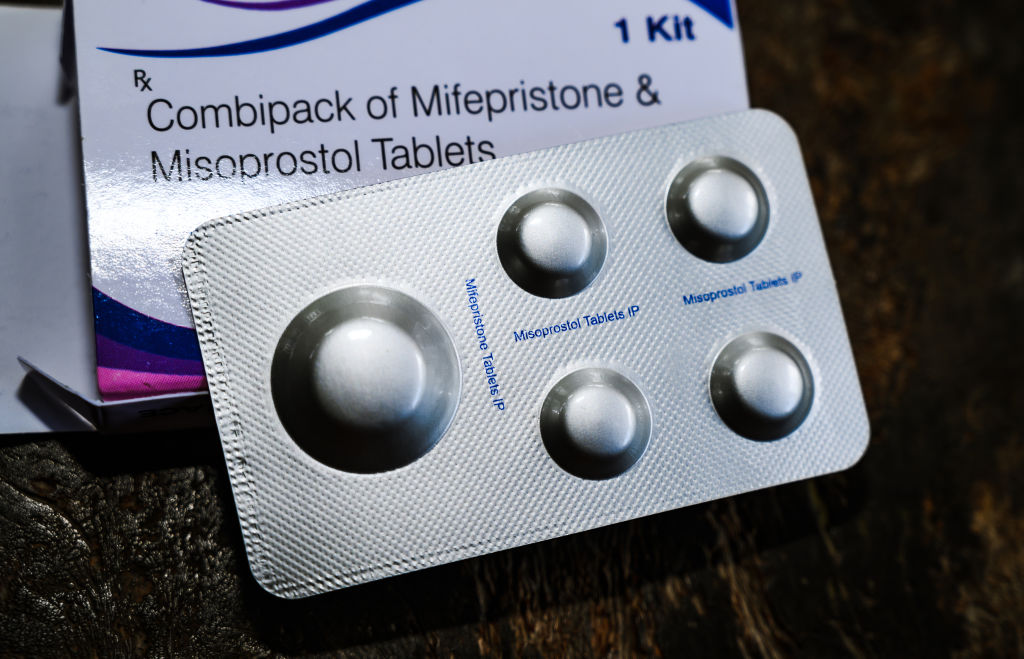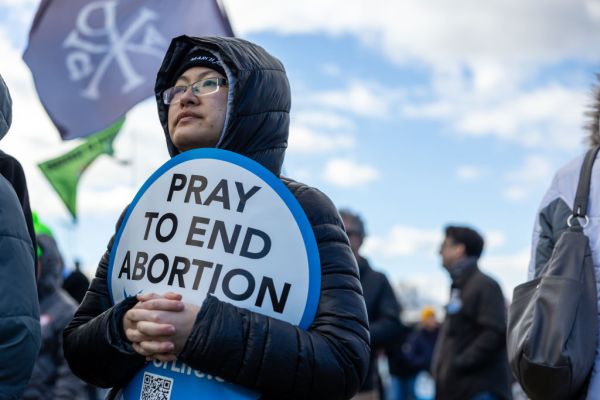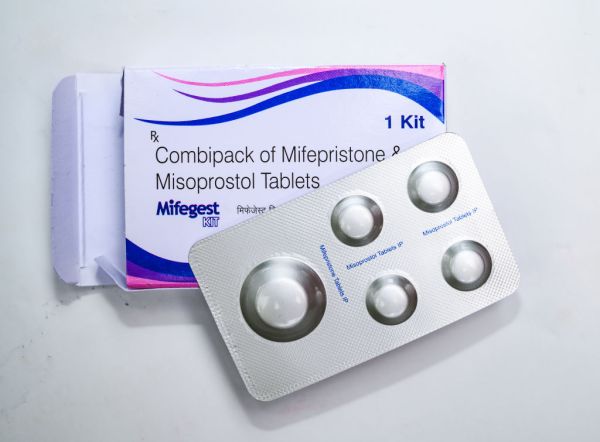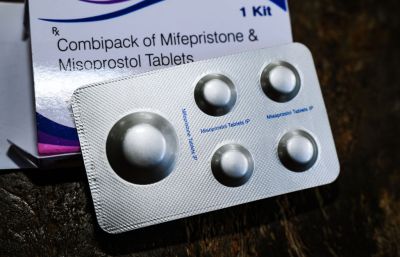Last week, a new #WeCount survey by the Society for Family Planning found that abortion numbers nationwide have increased since the Dobbs Supreme Court decision overturned Roe v. Wade.
At first glance, headlines generated by that report might lead the casual reader to assume anti-abortion laws haven’t done anything to achieve their intended purpose of saving lives. But even if the new report is accurate (more on that below), other studies show that there are likely tens of thousands of infants and toddlers alive today because of laws allowed by the Dobbs decision.
Some of the best evidence that anti-abortion laws actually save lives—and don’t merely lead to women seeking abortions to obtain them out of state or with drugs obtained through the mail—comes from a Johns Hopkins University study released in 2023. Researchers there found there were 9,799 more live births in Texas than expected over a nine-month period from April to December 2022 (the Dobbs decision came in June of that year). “Although our study doesn't detail why these extra births occurred, our findings strongly suggest that a considerable number of pregnant individuals in Texas were unable to overcome barriers to abortion access,” Alison Gemmill, assistant professor in the Bloomberg School’s Department of Population, Family and Reproductive Health and a lead author of the study, said in a statement at the time. A Texas criminal statute generally banning abortion from conception took effect in August 2022, but a civil law prohibiting abortions when a fetal heartbeat can be detected—about six weeks of pregnancy—had been in effect since September 2021.
When abortion was broadly legal in Texas before the heartbeat law took effect, about 4,000 abortions were performed each month in the state, so the Hopkins study finding more than 1,000 additional live births per month in Texas indicates a substantial number of lives saved by the law. Those numbers would easily run into the tens of thousands of lives each year if a similar effect occurred in other states where abortion has generally been prohibited. The authors of the report cautioned that “results cannot be generalized because the analysis was restricted to 1 state.” But a November 2023 report by researchers at IZA Institute of Labor Economics, a private German think tank, found: “Our primary analysis indicates that in the first six months of 2023, births rose by an average of 2.3 percent in states enforcing total abortion bans compared to a control group of states where abortion rights remained protected, amounting to approximately 32,000 additional annual births resulting from abortion bans.” The Society for Family Planning study estimates there were 208,000 fewer abortions performed in states with abortion bans since the Dobbs decision.
So how is it possible to square the studies finding that the overall number of births have increased in some states post-Dobbs with studies finding that the overall number of abortions have increased? “It is very possible that, while access [to abortion] was dramatically curtailed for people living in ban states, access substantially improved for residents of states without bans,” the Guttmacher Institute, a research organization that like the Society for Family Planning supports legal abortion, reported in March. While the number of abortions may indeed be up overall—in part due to trends that began before the Dobbs decision—it can also be true that laws restricting abortion since Dobbs have kept those numbers lower than they would be otherwise.
The three main factors cited by Guttmacher to explain its findings in its own study that abortion rates—the number of abortions per 1,000 women of childbearing age—had increased from 2020 to 2023 were: increased “financial support” for abortion, increased distribution of abortion drugs via virtual or “telehealth” appointments, and “shield laws” that protect those who perform or facilitate abortions.
Studies have long found a strong correlation between funding for abortion and abortion rates. “Approximately one-fourth of women who would have Medicaid-funded abortions instead give birth when this funding is unavailable,” according to a 2009 Guttmacher study. In the year after the Dobbs decision, according to the National Network of Abortion Funds, private “abortion funds financially supported 102,855 individuals seeking abortions.”
FDA rules making it easier to access the abortion drug mifepristone may also have increased abortion rates, Guttmacher notes. In the early months of the Biden administration, the FDA formalized a COVID-19 pandemic rule allowing the abortion pill to be distributed without an in-person visit to a doctor. And 22 states have passed the aforementioned “shield laws,” some of which protect those who ship mifepristone into states where abortion is banned.
It’s also important to note that abortion rates were trending upward even before the Dobbs decision, and factors like increased funding for abortion and more access to mifepristone may have also played a role in that trend. As the Centers for Disease Control and Prevention noted in its latest report on abortion statistics, the number of abortions had been generally declining since the 1980s and bottomed out in 2017. There were increases in 2018 and 2019, before a dip during the pandemic, and then a 5 percent increase in both the number of abortions and rate of abortions between 2020 and 2021. (The CDC has not yet issued a report for 2022, when the Dobbs decision was issued.)
This reversal in trends came after a 2016 FDA rule making it easier to access mifepristone. That rule allowed it to be prescribed to women who are up to 10 weeks pregnant, instead of seven weeks, and allowed non-physicians like midwives and nurse practitioners to prescribe it, not just doctors. The FDA also formally eliminated requirements for in-person medical appointments in 2021. England, which has also opted to keep its pandemic-era rule of allowing abortion pills to be distributed by mail, has also seen spiking abortion rates and numbers (a trend that began in 2017). During this pre-Dobbs period, several blue states were also passing laws to reduce the cost of abortion or eliminate “cost-sharing” altogether. In 2017, Illinois passed a law requiring Medicaid to cover elective abortions. Between 2017 and 2020, New York, Washington, Oregon, Illinois, and Maine all passed laws requiring private insurance plans to cover abortions.
There are of course limitations to assessing the accuracy of the Society for Family Planning report. In the three months before the Dobbs decision, the study found that a little more than 250,000 abortions were performed. But in the first three months of 2024, the same study found that a little fewer than 300,000 abortions were performed. The study reports that all “telehealth abortions are counted according to the state to which the medications are mailed,” but the shipment of mifepristone does not necessarily mean that an abortion was performed: Some drugs could be saved for future use or go unused. Pills ordered by mail “are not actually validly-counted [abortions] because that includes both actual abortions and also advanced supply,” Lyman Stone, senior fellow at the Institute for Family Studies, told The Dispatch. Stone noted that just as a certain percentage of pregnant women who schedule abortion appointments cancel them, a certain percentage who request mifepristone by mail will never take it. “You don’t actually know how many of those pills got used,” he said.
Then there’s the question of the reliability of the underlying sources of the data, most of which comes from abortion providers themselves. According to the Society of Family Planning report, 82 percent of the abortions counted “were based on data obtained from providers or health departments, while the remaining 18% of the data were imputed,” including estimates of a “large number of abortions in California, New Jersey, and New York, contributing to some uncertainty in those estimates.” On the other hand, the report did not include any abortions “that occurred outside clinician-provided care, including those provided by online stores that sell abortion medications, volunteer accompaniment networks, and other types of self-managed abortion.”
So it is entirely possible that anti-abortion laws have saved lives in the states where they are in effect, even as other policies and cultural trends have led to an increased number of abortion nationwide—a trend that started before 2022.







Please note that we at The Dispatch hold ourselves, our work, and our commenters to a higher standard than other places on the internet. We welcome comments that foster genuine debate or discussion—including comments critical of us or our work—but responses that include ad hominem attacks on fellow Dispatch members or are intended to stoke fear and anger may be moderated.
With your membership, you only have the ability to comment on The Morning Dispatch articles. Consider upgrading to join the conversation everywhere.